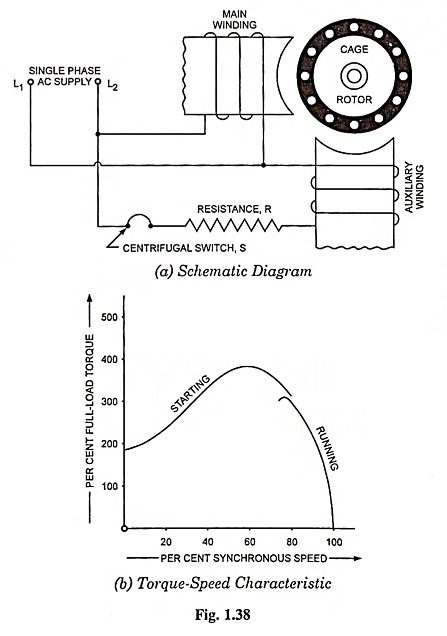Resistance Start Single Phase Induction Motor:
It is a form of split-phase motor having a high resistance connected in series with the auxiliary or starting winding, as illustrated in Fig. 1.38 (a). A typical torque-speed characteristic is shown in Fig. 1.38 (b). The starting torque is 1.5 times to twice the full-load starting torque and starting current is 6 to 8 times full-load current. The speed regulation of a resistance start single phase induction motor is very good. The per cent slip in most fractional kilowatt split-phase motors is about 4-6 per cent. Such a motor may operate with a power factor of 0.55-0.65 and efficiency of 60-65 per cent.
Owing to their low cost, resistance start split-phase motors are most popular single phase motors. These motors are made in fractional kilowatt (1/20 to 1/4 kW) ratings with speed ranging from 2,875 to 700 rpm. Such motors find wide applications for low inertia loads, continuous operating loads and applications requiring moderate starting torque such as for driving washing machines, fans, blowers, centrifugal pumps, domestic refrigerators, duplicating machines, office appliances, food processing machines, woodworking tools, grinders, oil burners etc. Because of low starting torque these motors are seldom employed in sizes larger than 1/4 kW.
The direction of rotation of a capacitor-start induction motor may be reversed by inter-changing the connections to the supply of either the main or starting winding. The noteworthy point is that reversal of a split-phase induction motor takes place only when it is at rest and the starting switch is in its normally closed de-energized position.
